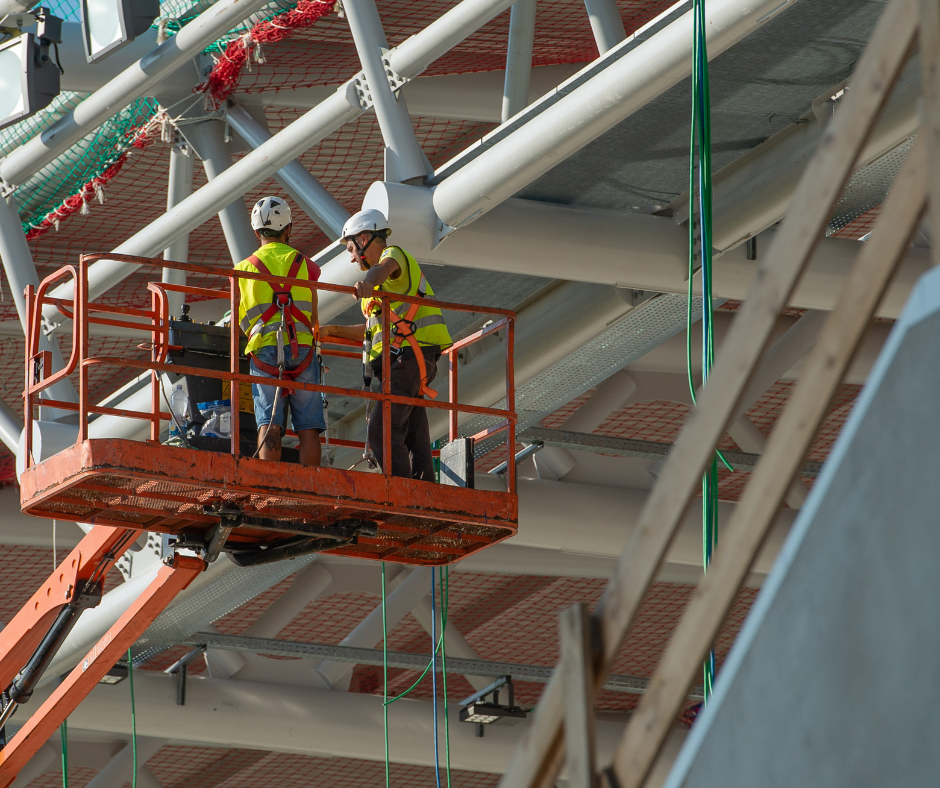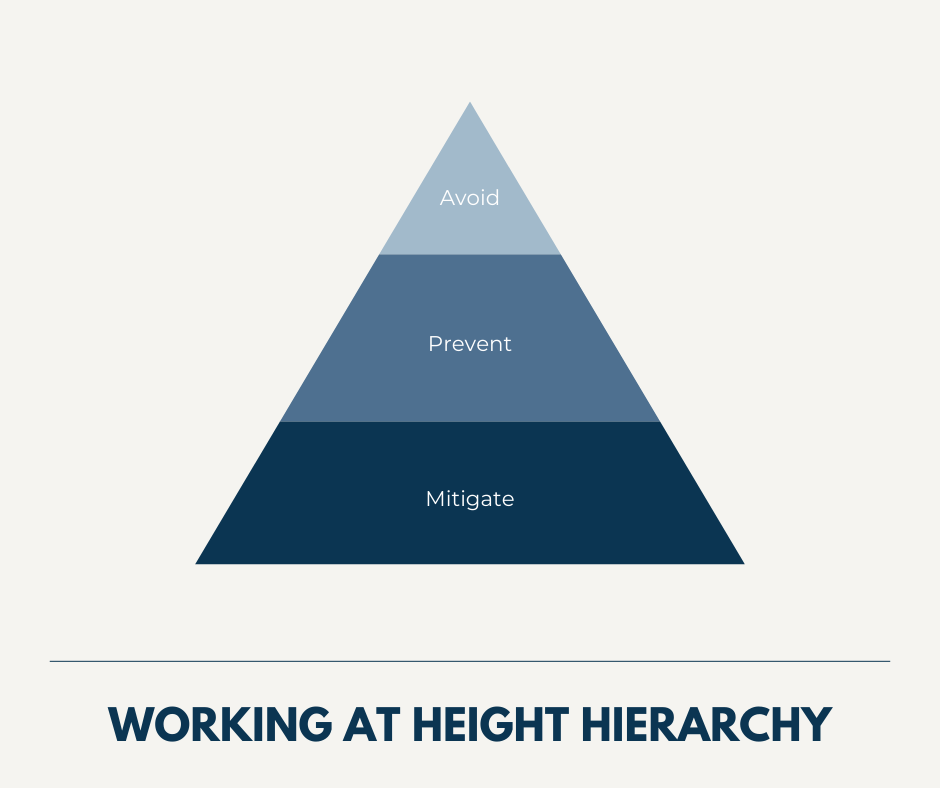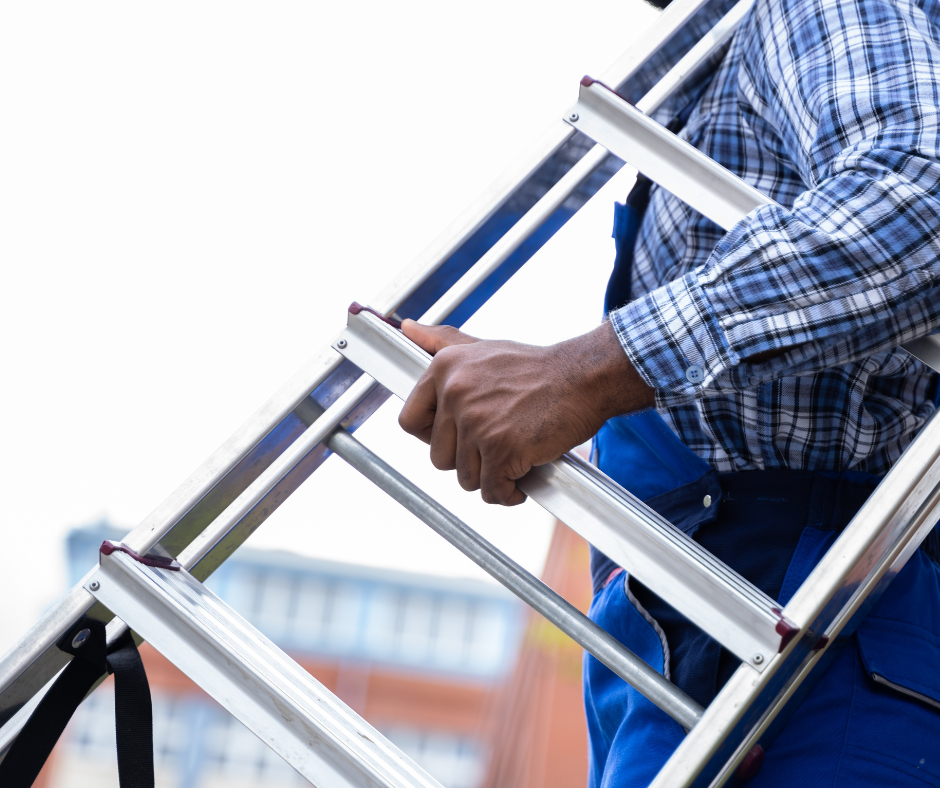Working at height remains one of the highest risk activities at work in the UK. HSE statistics show that in 2022/23 135 people were killed in work-related accidents in the UK, of these the highest proportion came from a falls from height, in which 40 people were killed.
Work at height means work in any place where, if there were no precautions in place, a person could fall a distance liable to cause personal injury. Key examples are working from a ladder, falling through a fragile surface or falling into an opening in a floor.
Although working at height involves falls from a level, a lot of working at height is undertaken using access equipment, such as ladders, mobile elevating work platforms (MEWP) or scaffolding. Due to this, safety equipment plays an important role in working at height tasks – keep reading to learn more.
What equipment is used when working at height?
 There is a multitude of types of working at height equipment, different equipment serves different purposes and allows us to work safely at height the most reasonably practicable way.
There is a multitude of types of working at height equipment, different equipment serves different purposes and allows us to work safely at height the most reasonably practicable way.
Basic working at height equipment, such as ladders, can be useful for short duration light work tasks such as changing a light bulb.
Other activities may require more complex equipment. For example, fixed scaffolding can be installed when lengthy periods access is required. Going further than this MEWPS, can be used to access harder to reach areas.
What type of working at height equipment is best?
 The best type of working at hight equipment is that which reduces the risk so far as reasonably practicable, as with most things in health and safety that means that we have to undertake a risk assessment to select the best equipment.
The best type of working at hight equipment is that which reduces the risk so far as reasonably practicable, as with most things in health and safety that means that we have to undertake a risk assessment to select the best equipment.
To help us we can apply the working at height hierarchy:
- Avoid: can you avoid working at height if possible?
- Prevent: can you prevent falls? such as using equipment with fitted edge protection.
- Mitigate: can you mitigate the risk of any falls? installing soft landing systems.
In addition to this hierarchy, we should always apply the principles of prevention.
Key features of the principles include the prioritisation of collective measures rather than individual, such as installing guard rails which offers collective protection, over fall restraint lanyards that just protects the user.
When selecting the correct equipment, we must consider all the factors involved in the task. For example, whereas collective measures afforded by a mobile tower scaffold may be preferable to the use of a ladder, the work area may hinder emergency egress routes.
In this situation, a risk assessment may deem a stepladder more appropriate given the task is of short duration. Similarly, MEWP may be the easiest method of accessing external portions of the building, however, consideration of its appropriateness will be needed if overhead power lines are present.
Are step ladders classed as working at height?
 A common misconception regarding working at height is that step ladders are banned. This is not the case, the law allows for a sensible proportionate approach to managing risk and step ladders can fill this; however, they should never be your first port of call.
A common misconception regarding working at height is that step ladders are banned. This is not the case, the law allows for a sensible proportionate approach to managing risk and step ladders can fill this; however, they should never be your first port of call.
The HSE works in collaboration with The Ladder Association to produce guidance on ladder use. Here are some key points:
- All ladders:
- Conduct a pre use check ensuring no damage to the feet, rungs, legs, platform and any locking mechanisms.
- Maintain three points of contact at all times.
- Do not overreach.
- Do not stand on the top three rungs (including the top rung).
- Only carry light tools/materials.
- Always face the ladder.
- Step ladders:
- Ensure locking mechanisms are fully engaged.
- Access ladders:
- Use the 4-in-1 rule.
- The ladder should be footed at all times and tied off at the top if possible.
More detailed guidance can be found on the joint HSE/Ladder Association publication LA455.
How can WA Management help?
WA Management offer bespoke risk assessments for any activities that involve working at height. We also provide both in-person and online working at height training options. Get in touch to learn more!

Risk Assessment and Working at Height training courses are essential tools in protecting the safety of your workers. Make sure you don’t miss out on our 10% off deal on these courses, available until the end of March. Simply enter the code ‘heights10’ at checkout to save!
Read more Consultant’s blogs here.
To keep up to date with the latest health & safety news and advice, follow us on social media:
